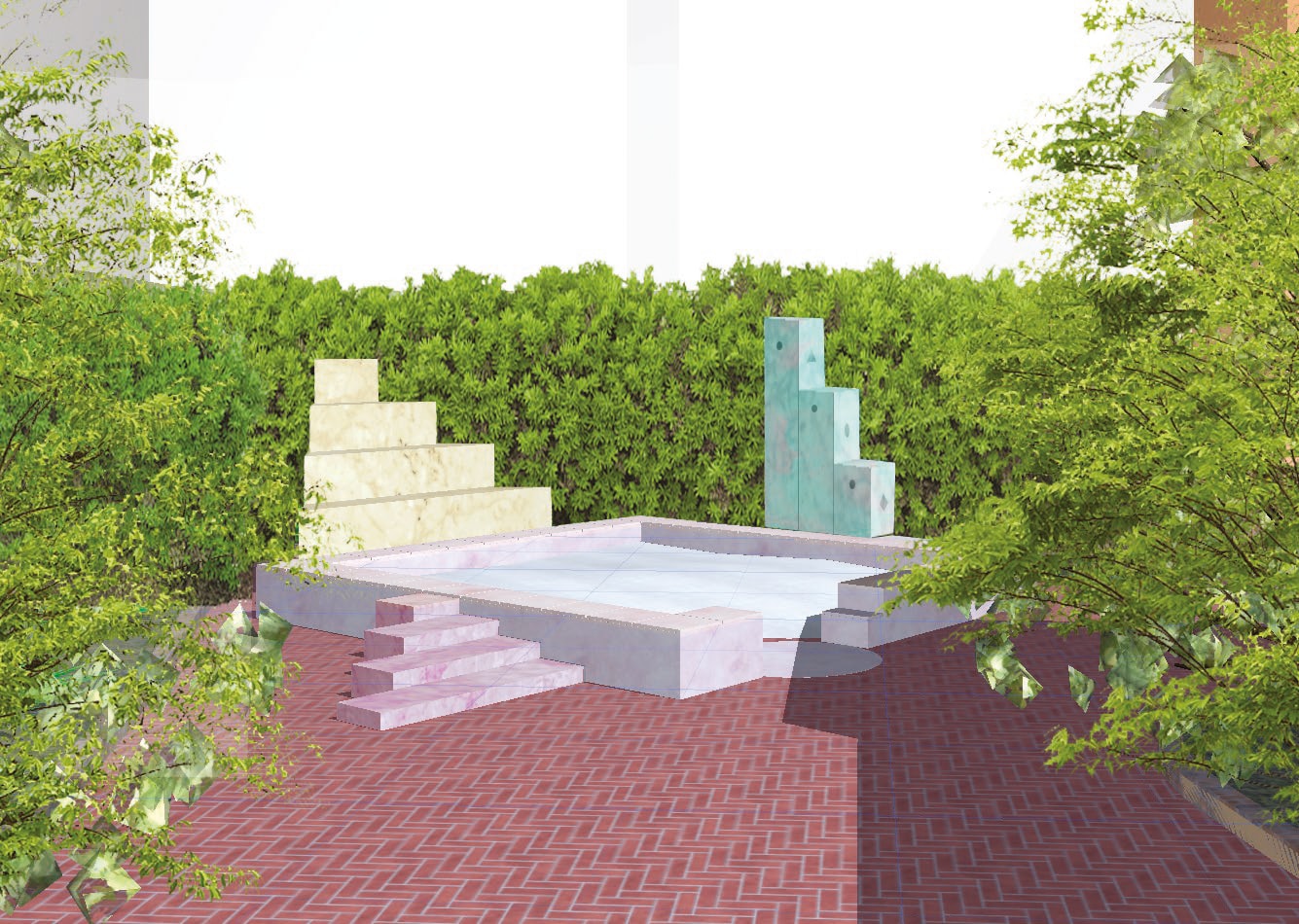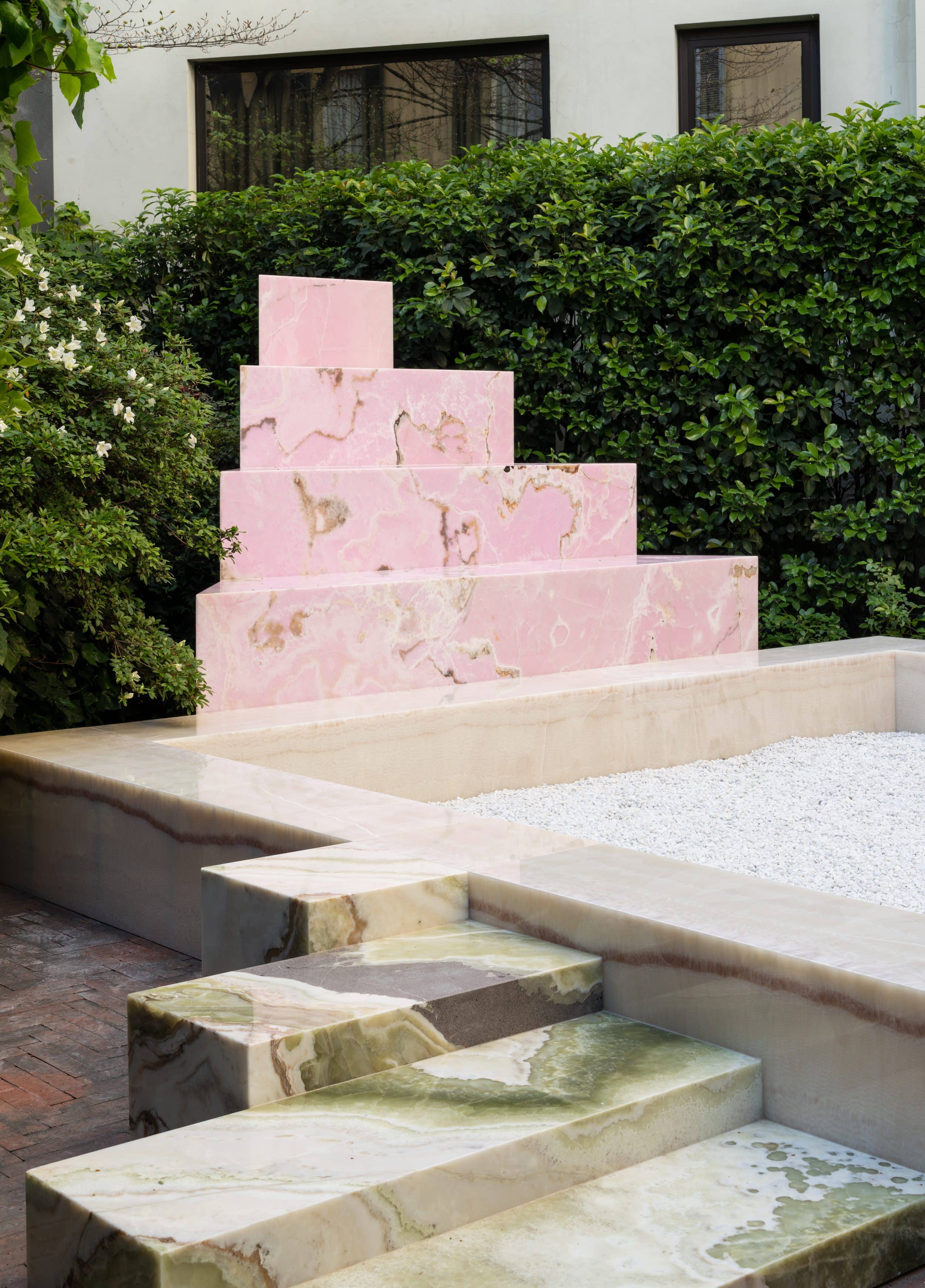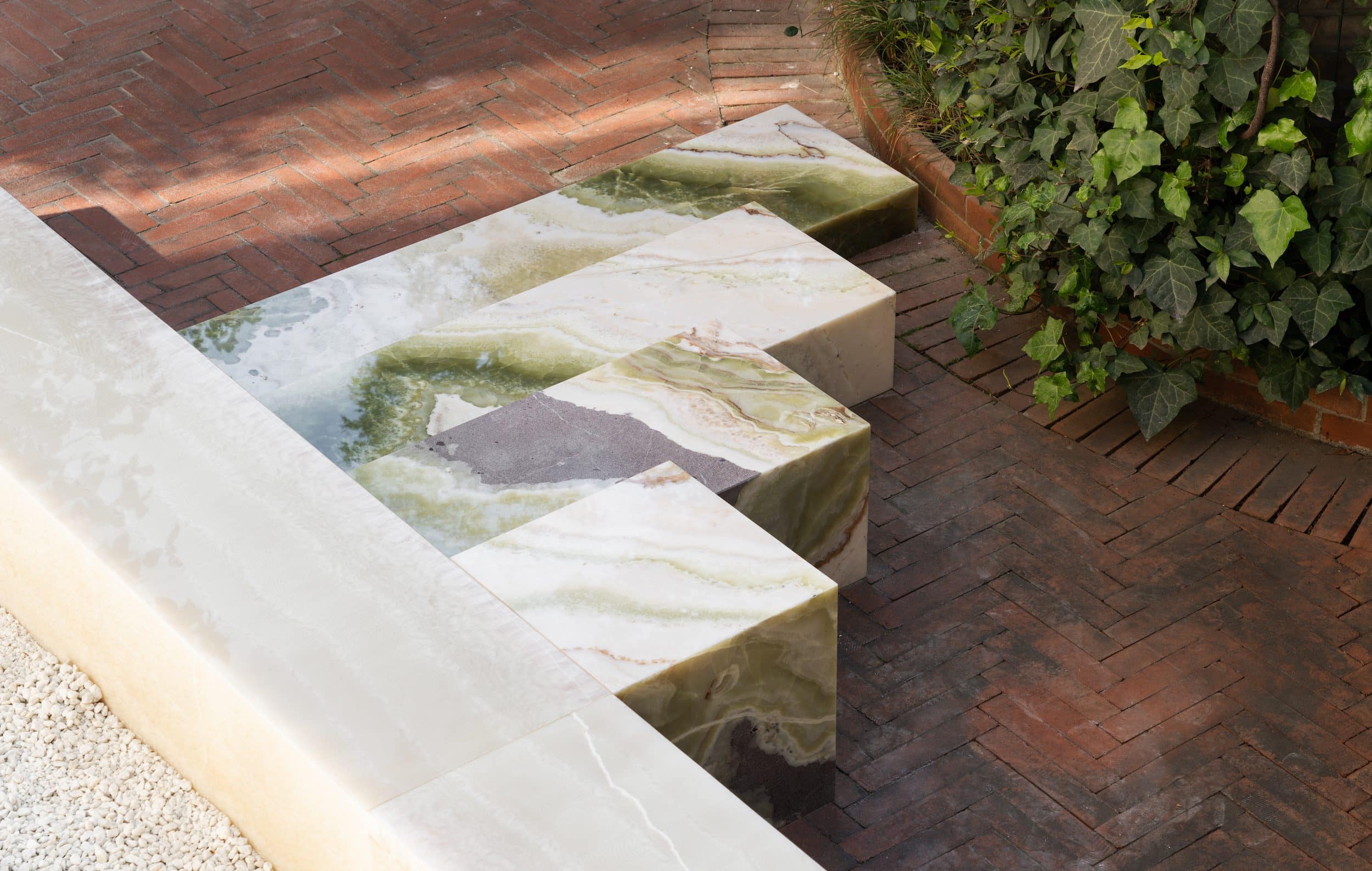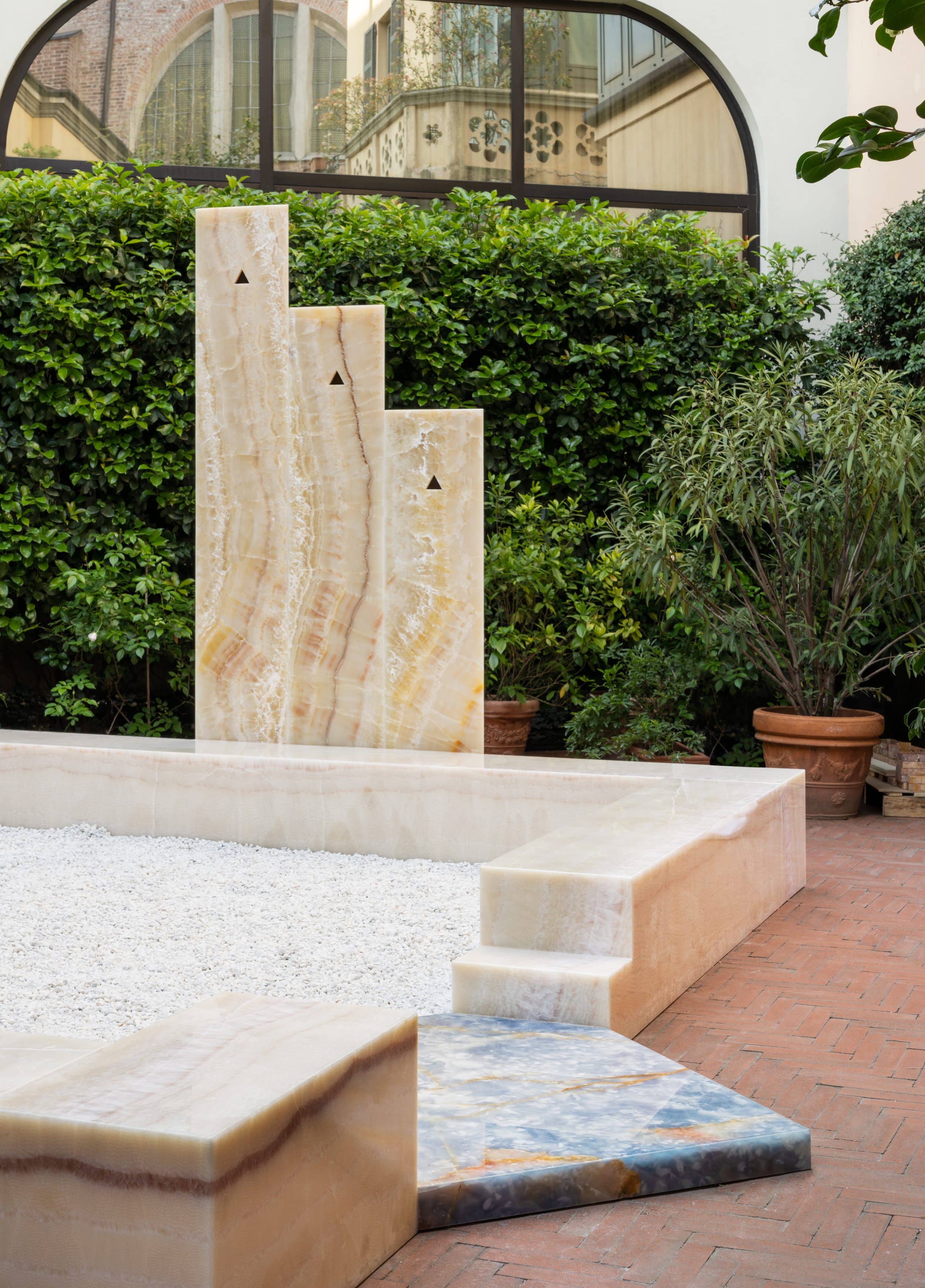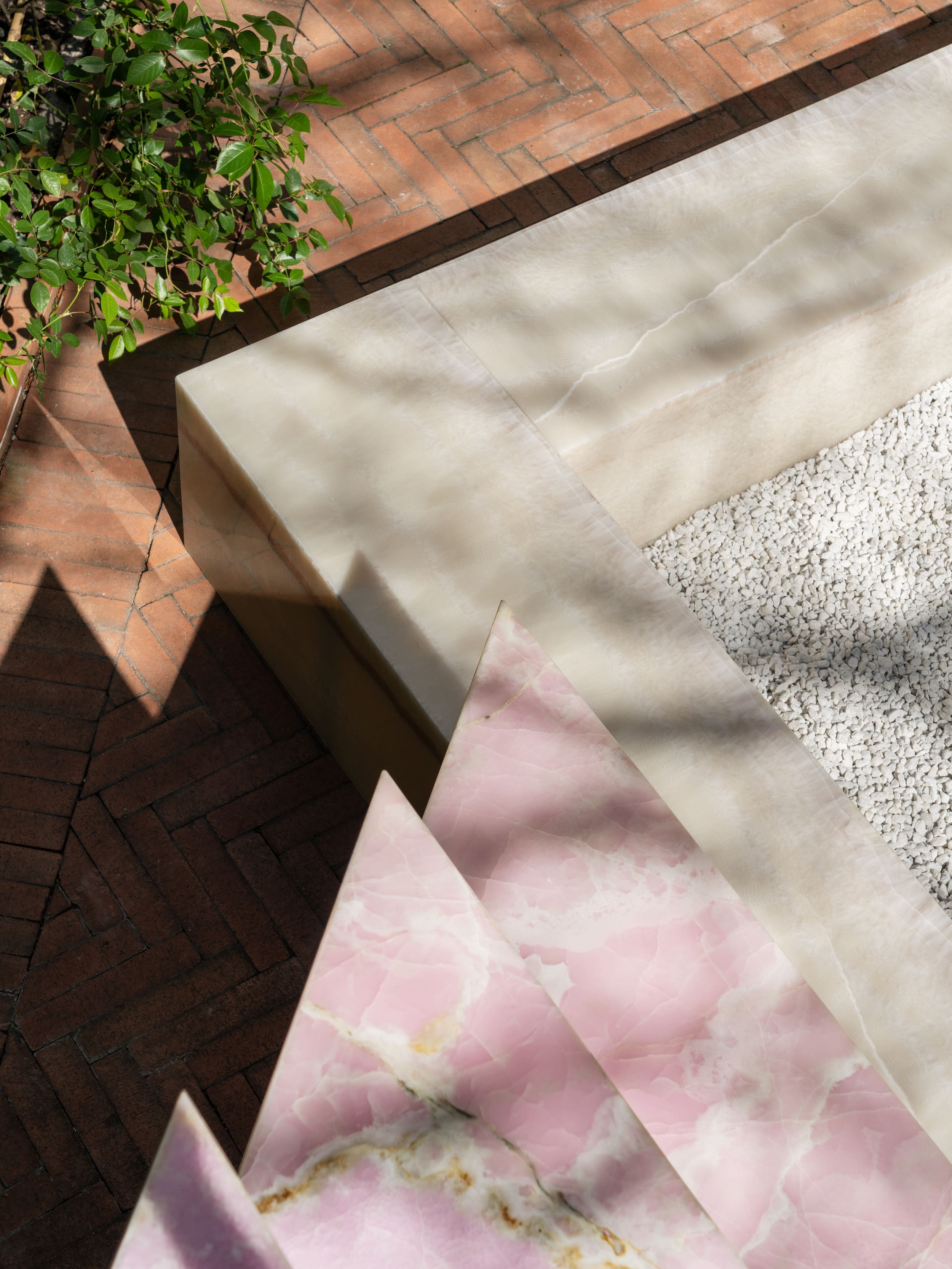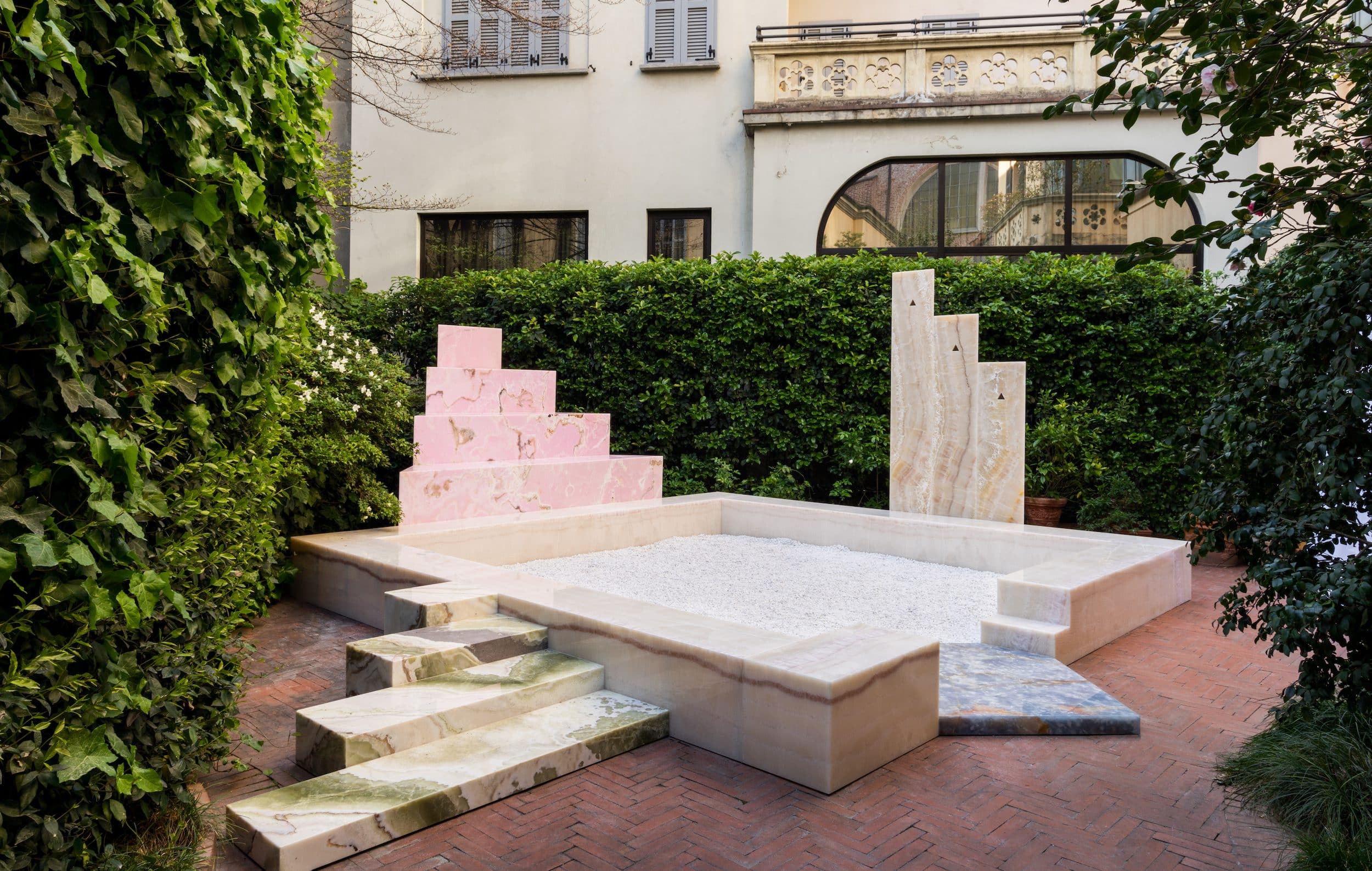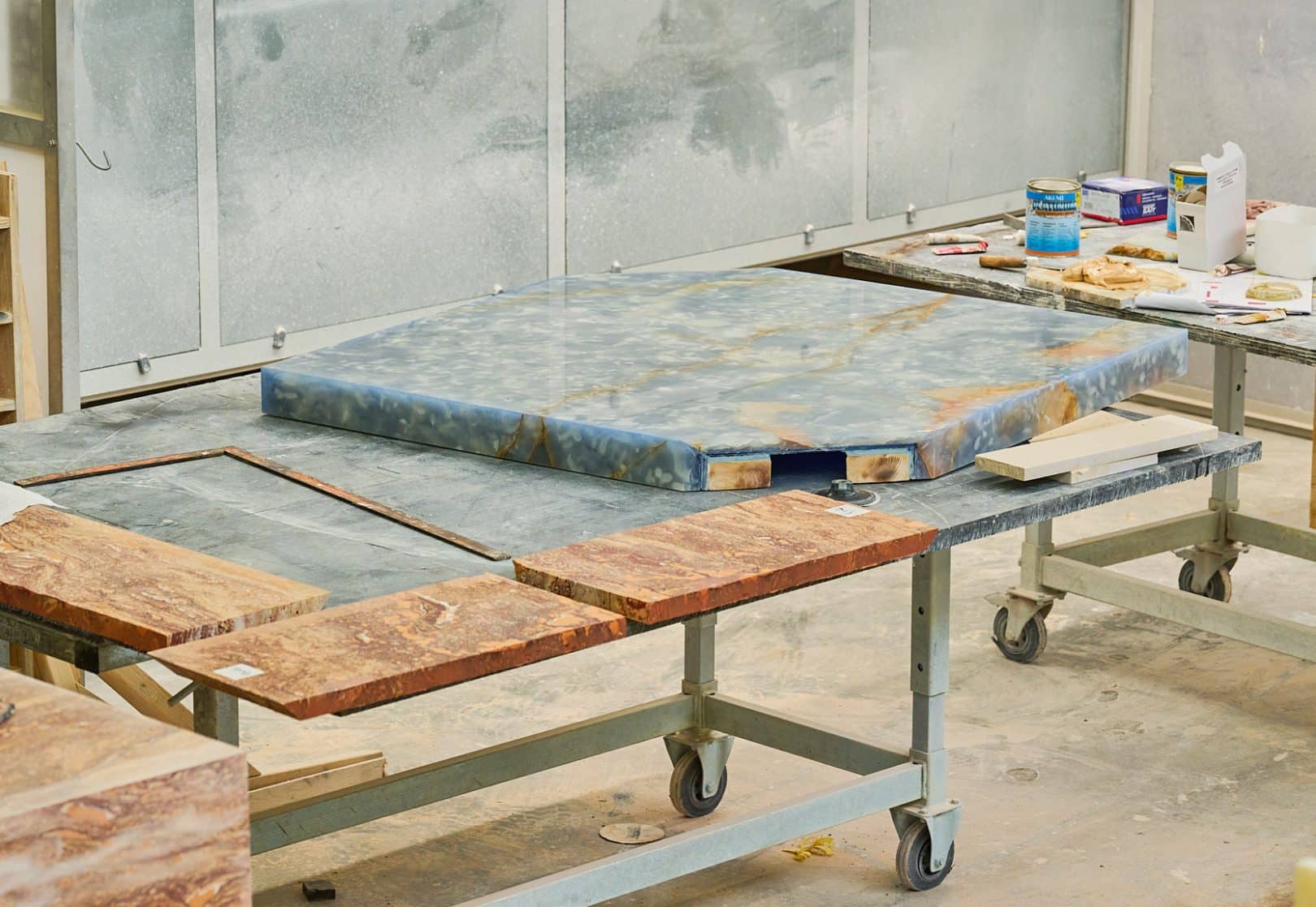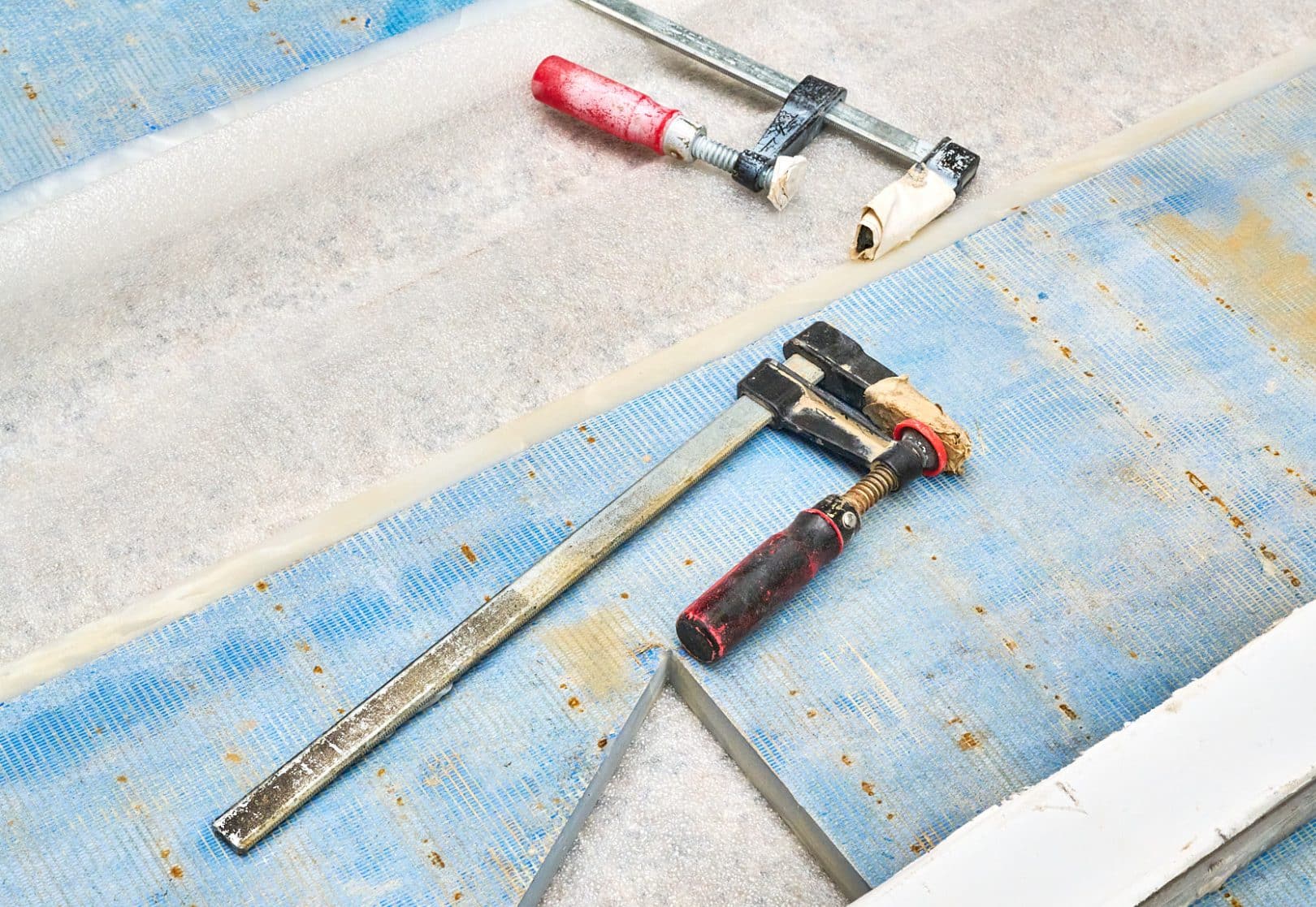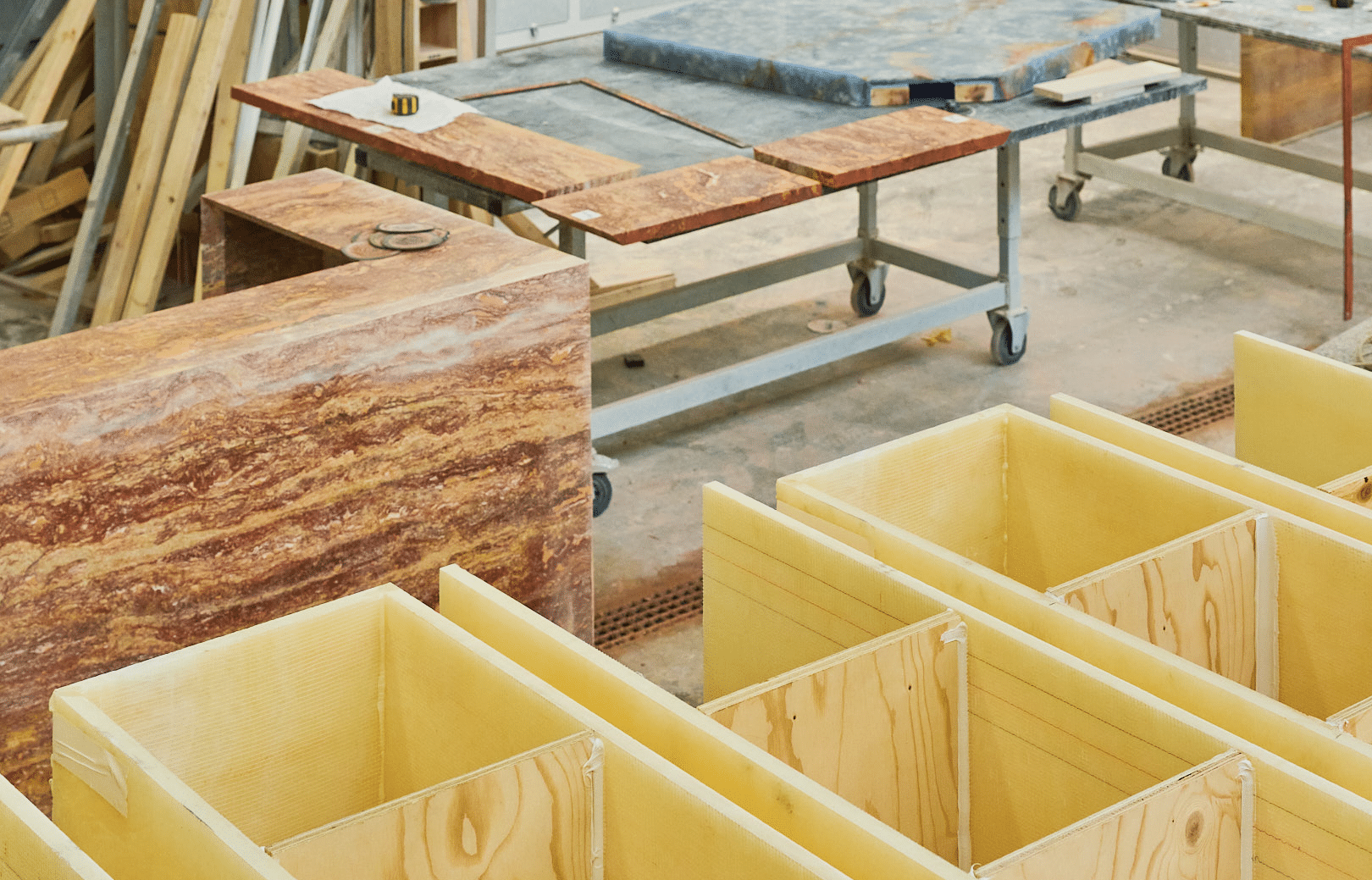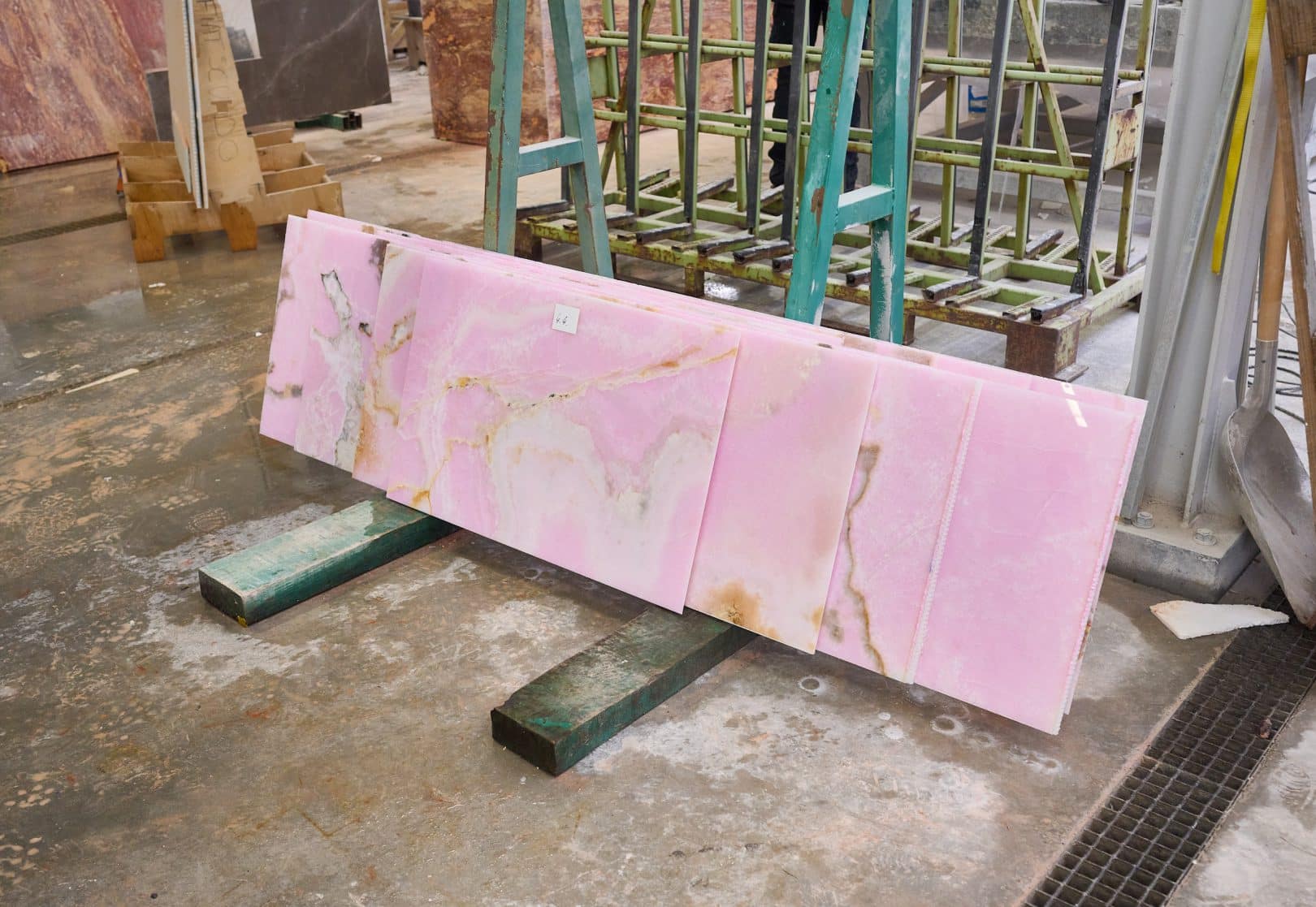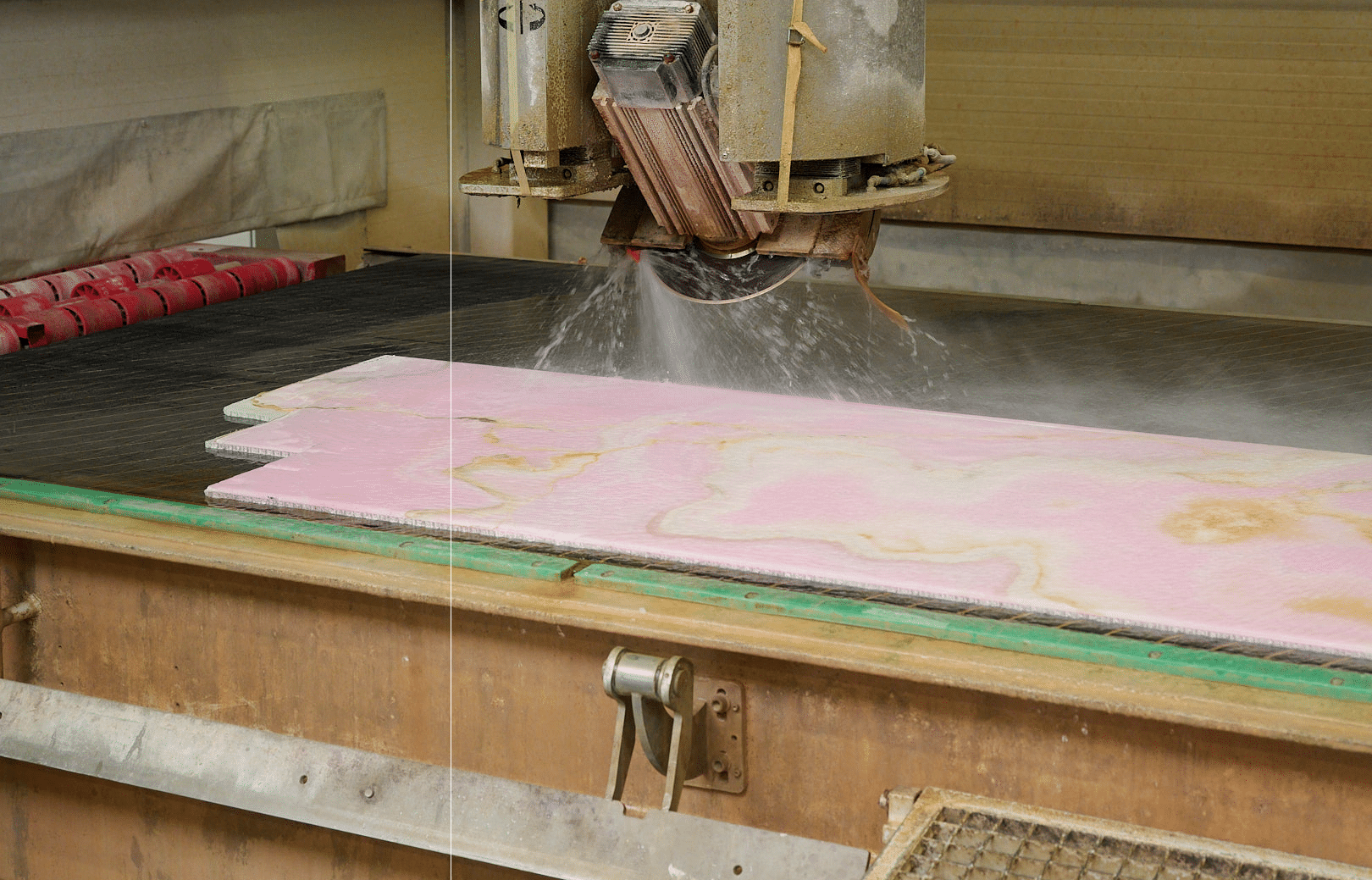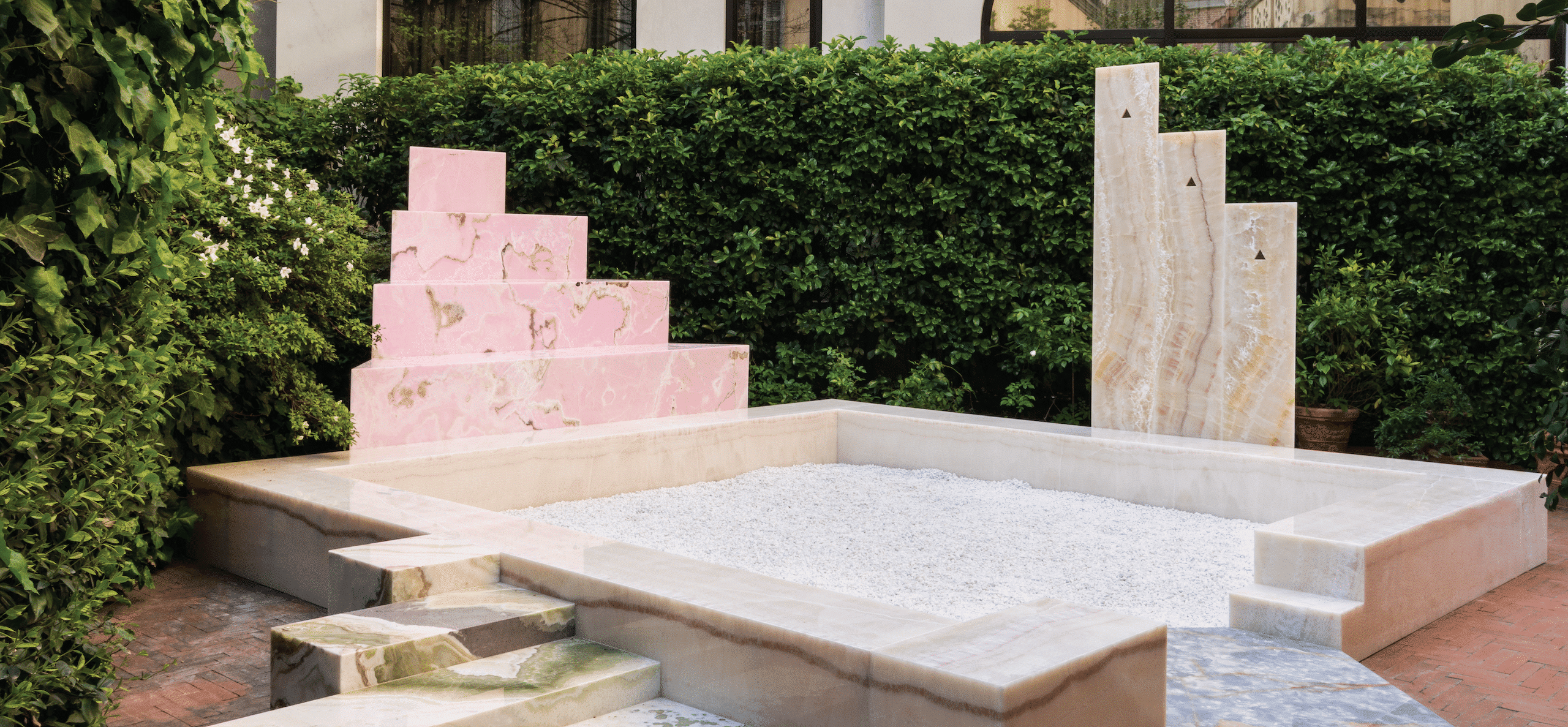
Rotterdam-based architecture and design practice Studio Ossidiana designed a small stage, or ‘Tribune’ called ‘A Mineral Assembly’, for the garden of SolidNature’s temporary residence at Milan Design Week 2023. Constructed in various types of onyx with hues ranging from soft to bright, the installation offers a place for conversation and inspiration.
We interpreted the tribune as a ‘piccolo teatro’, a mineral theatre for small and big talks during the Salone. Being in a garden, we thought it would become a small observatory where to follow talks, but also look at other guests, as well as birds and other visitors of the garden: along with sitting space for people, are three pigeon towers reserved for very posh Milanese birds who might attend the events.
Studio Ossidiana is a practice based in Rotterdam that works at the crossroads of architecture and design, led by Giovanni Bellotti and Alessandra Covini. Balancing research and fabrication, the practice explores innovative approaches through research, materials, objects, installations, and buildings.
